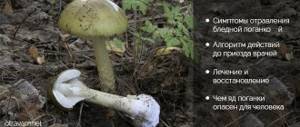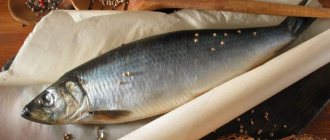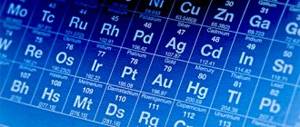Measures and rules for the prevention of food poisoning, as well as infectious diseases. Each of us has experienced symptoms similar to food poisoning at least once in our lives: for some, recovery took several hours, while others spent weeks in hospitals.
Doctors in the post-Soviet space distinguish between food poisoning (including mushrooms and products containing toxic chemical compounds), acute intestinal infections, foodborne toxic infections, helminthiasis, etc.
In the terminology of the WHO and Western sources, we encounter the voluminous term “foodborne illness,” which includes all of the listed nosologies and, on the one hand, this simplifies the clinical perception of the problem, and on the other, it creates confusion when comparing classifications.
Infectious diseases transmitted by nutrition or, more simply, intestinal infections are widespread throughout the world. It has been estimated that approximately 48 million cases occur annually in the United States alone, and nearly 3,000 of them are fatal.
On average, one in five cases of diarrhea is caused by eating unhealthy foods. This means that the average person in the United States gets food poisoning every three to four years.
In our country, the statistics are no better, and in recent years the incidence has increased by 4.4%.
Causes and sources of poisoning
Food poisoning is most often caused by stale food. Another reason is non-compliance with sanitary standards during the preparation of the product or storage conditions. Products that can cause poisoning include:
- meat and meat products fish;
- Fish and seafood;
- milk and dairy products;
- confectionery with cream;
- fruits and vegetables;
- homemade canned food and marinades.
The most common pathogens of toxic infections are E. coli, enterococci and staphylococci, vibrio, and cereus bacteria.
What microorganisms most often cause intestinal infections?
Salmonella ranks first among microorganisms that cause intestinal infections.
Salmonella
There are many types of salmonella, ranging from the salmonella that causes typhoid fever to the one that causes gastroenteritis. This microorganism is a common representative of the intestinal microflora of animals and reptiles and lives freely in the environment.
Food can become contaminated with Salmonella from the environment or after contact with animals and cause illness if consumed.
Most cases of salmonella-related enteric infections are caused by cross-contamination (for example, salmonella from meat onto lettuce or other uncooked foods), consumption of undercooked meat and poultry, or contamination of finished products.
Escherichia coli
Escherichia coli is a common cause of foodborne infections and diarrhea in travelers.
Infection with Escherichia can occur by consuming food or water contaminated with feces from an infected person.
Some types of Escherichia can be very dangerous - leading to kidney failure and other serious complications.
Hepatitis A virus
The hepatitis A virus is transmitted from an infected person through contaminated food and sometimes by eating crustaceans.
Symptoms of the disease usually appear no earlier than 15-50 days after infection, which creates difficulties in identifying the source of infection.
Noroviruses
Norovirus infection is the most common foodborne infection and is transmitted from patients during food preparation.
Norovirus is highly contagious and spreads easily from person to person.
Symptoms most often occur 24 to 48 hours after eating contaminated food and include nausea, vomiting, diarrhea and abdominal pain.
Most patients recover on their own without medication.
Listeria monocytogenes
Listeria can be found:
- in unpasteurized or contaminated milk;
- soft cheese and other dairy products;
- in sausages;
- fast street food (for example, hot dogs);
- in smoked seafood.
Listeria can cause gastrointestinal symptoms that usually develop within 24 hours and include fever, watery diarrhea, nausea, vomiting, headache, and joint and muscle pain.
A more serious disease, listeriosis , can develop within 1-3 weeks if the bacteria enters the bloodstream. Listeriosis can occur without prior gastrointestinal distress and is most common in pregnant women, the elderly, and immunocompromised patients.
In addition to the most common ones, in general there are more than 200 microorganisms that cause intestinal infections.
Factors that increase the risk of foodborne illnesses
Weakened immune defense
The immune system plays a vital role in protecting the body from foodborne infections, therefore, if its functioning deteriorates, a person becomes more vulnerable. For example, here are several groups of people with weakened immune systems:
- young children;
- aged people;
- persons suffering from chronic diseases;
- pregnant women and people using certain types of medications that reduce the body's resistance to infections.
Improper storage
Improper storage, insufficient processing, and reheating food can all increase the risk of food poisoning.
To make sure your food is cooked properly, you can use a kitchen thermometer to measure the internal temperature of meat, poultry, and seafood. It is also best not to leave food for more than 2 hours at room temperature.
O or “Deadline for Consumption” printed on product packaging are marks of quality, not product safety, and such food should not be interpreted as “safe” for consumption. You should also not be sure that food is safe if it has unchanged appearance and smell.
Cross-contamination of food, which can occur when contaminated food touches other foods or during handling on contaminated surfaces such as scales or cutting boards.
Remember to wash your hands thoroughly after using the toilet, changing diapers, handling animals, or any other time your hands become dirty, and before handling food. Persons who have contact with food and do not follow these simple hygiene rules can contaminate food with bacteria from the intestinal flora group.
Symptoms of food poisoning
The specificity of clinical manifestations depends on a number of factors: the age and general condition of the victim’s body, the type of microbe or toxin, and the amount of food taken. Based on this, poisoning can occur in mild, moderate or severe form. Poisoning occurs unexpectedly and is accompanied by unpleasant symptoms. Let's list the typical ones:
- spasmodic or static pain in the abdominal area;
- nausea and vomiting (often repeated);
- bowel dysfunction (diarrhea);
- flatulence;
- general malaise, weakness;
- temperature increase.
Food poisoning is characterized by a rapid manifestation of the disease (within an hour or a day) and a short course (with timely assistance provided - from several days to a week).
In some cases, there may be no symptoms (for example, with botulism). Therefore, if you are not sure about the presence of poisoning, but think that it is possible, then consult a doctor as soon as possible.
FOOD POISONING AND THEIR PREVENTION
Food poisoning is an acute disease characterized by general intoxication, primary damage to the gastrointestinal tract, impaired water-salt metabolism and resulting from the ingestion of toxic substances with food. All food poisoning can be divided into two groups: microbial and non-microbial origin.
Poisoning of microbial origin includes food intoxication
and
toxic infections
. The cause of food intoxication is the consumption of food containing a toxin accumulated as a result of the development of microorganisms (botulism). Toxic infection is caused not so much by the microorganisms themselves, but by their toxins, which are formed as a result of the vital activity of these microorganisms and during their destruction in the human body (Salmonella, Staphylococcus, Proteus, Enterococcus).
Poisoning of non-microbial origin consists of poisoning by poisonous products of plant and animal origin (poisonous mushrooms, plants, shellfish), as well as impurities of a chemical nature (salts of heavy metals, pesticides, etc.).
Food poisoning, as a rule, begins suddenly and in a preschool setting affects a large contingent of children. The most characteristic symptoms of poisoning include an acute onset with the appearance of cramping pain in the abdominal area. General weakness, dizziness, headache, vomiting, diarrhea are observed, and in severe cases - difficulty swallowing, dilated pupils, drooping of the upper eyelid (ptosis), and an acute weakening of blood circulation (collapse). Some symptoms of food poisoning (nausea, vomiting, fever) may be of a psychological or emotional nature (overwork, feeding a child against his wishes, a feeling of fear), but differential diagnosis in each case can only be carried out by a doctor. Very often, food poisoning leaves serious consequences in the form of chronic diseases of the gastrointestinal tract (see Appendix 30).
Food intoxication includes botulism , a disease caused by a toxin from a special bacterium Clostridium botulinum
. The bacterium and its spores are found in the soil, from where they enter water, fresh vegetables and fruits, food products, and with them into the intestines of humans, animals and fish, where they multiply. If sanitary rules are violated, the pathogen can get into food products, where, under favorable conditions (lack of oxygen access, long-term storage, room temperature), it begins to release a poison that is very dangerous for humans - a toxin. The toxin is produced only under anaerobic conditions, so it is mainly contained in canned food and canned vegetable products (mushrooms, peas, compotes). Poison can also be found in the deep areas of solid foods such as sausage, ham, salted and smoked fish, especially if they are prepared at home, without taking the necessary precautions. The toxin acts mainly during the first day after ingestion of contaminated food, and symptoms from the central nervous system occur. This makes botulism different from other poisonings. The main signs of botulism: respiratory distress due to paralysis of the respiratory muscles, a decrease in body temperature to 35 ° C, dry mouth, loss of voice, difficulty swallowing, dilated pupils, double vision, impaired color perception of objects, etc. Patients feel general weakness, sometimes nausea and vomiting, and abdominal pain appear. The disease lasts 4-6 days, sometimes longer. Recovery is long.
Help for botulism must be provided immediately. It consists of timely administration of anti-botulinum serum, otherwise the victim may die.
The concept of food toxic infection is a collective one and unites a number of etiologically different, but similar in course of diseases.
Toxic infection is caused by pathogenic microorganisms that enter food during improper transportation, storage and cooking of products.
The causative agents of food poisoning are numerous types of microorganisms: salmonella, E. coli, Proteus, staphylococci. The most common types of acute intestinal infections include salmonellosis, shigellosis, and escherichiosis.
Food poisoning associated with eating food containing pathogens occurs as a result of exposure to the body of the pathogens themselves, as well as their waste products - toxins.
Products, even without visible signs of spoilage, can contain pathogenic microbes and cause food poisoning. The causative agents of food poisoning are most often found in food of animal origin: meat, fish, milk, canned food, duck and goose eggs, etc. The disease occurs suddenly and, as a rule, simultaneously affects large groups of people receiving food from the same source; poisoning is accompanied either by gastritis (inflammation of the walls of the stomach with painful phenomena in the abdomen, nausea, vomiting), or gastroenteritis (inflammation of the walls of the stomach and intestines with the same phenomena as with gastritis, to which diarrhea is also added).
One of the first places among foodborne toxic infections is occupied by salmonellosis . The group of salmonellosis (more than 2000 species) includes diseases of various clinical manifestations caused by bacteria of the Salmonella genus. The disease can occur in both sporadic cases and outbreaks. Salmonella are small, mobile bacteria that can remain viable for a long time in the external environment. Thus, in the water of open reservoirs they can live up to 120 days, in sea water - up to 217 days, in soil - up to 9 months, in room DUST - up to 517 days, in sausages up to 130 days, in eggs and frozen meat up to 13 months These bacteria multiply well in food products at room temperature, especially in meat and dairy products, but the appearance and taste of the products do not change. The most common routes of infection are food
and
water
.
High temperature is detrimental to salmonella: boiling kills them instantly. It has been established that to destroy salmonella in meat, you need to cook it for 1 hour. When frying meat in the oven, where the temperature reaches 160°C, inside a piece of meat it does not exceed 68.5°C. Salmonella in poultry meat is killed if the meat is cooked for 1.5-2 hours (depending on the fat content of the meat). Products must be sold immediately after production of the semi-finished product (up to 1,846,780 microorganisms are found in 1 g of minced meat immediately after its preparation, and 100,195,100 a day later).
The source of salmonellosis infection can be animals, most often domestic animals (cattle, pigs, cats, dogs), birds, people with salmonellosis or healthy carriers of the bacteria.
Outbreaks of salmonellosis caused by contamination of meat and dairy products, vegetables, and eggs, including goose and duck eggs, have been described, so the use of these eggs for feeding children is prohibited. The mechanism of transmission of the pathogen is fecal-oral, carried out by food (leading), water and contact-household routes. In recent years, the dust factor has been identified, which is important for children with weakened resistance.
Salmonella infection is possible when using water contaminated with sewage. In recent years, there has been an intensive increase in the incidence of salmonellosis. The disease is especially susceptible to children of early and preschool age, in whom it occurs more often than in school-age children and adults, which is due to the functional immaturity of the digestive organs.
The disease occurs only in cases where a huge amount of salmonella enters the human body. Salmonella invades the lymphatic system of the small intestine, penetrates the blood and lymph nodes. When Salmonella dies, toxins are released, which determine the entire further clinical picture of the disease.
The incubation period most often lasts from 2 to 3 days. In the typical course, the disease develops acutely. Externally, children have pale skin and a dry, coated tongue. Simultaneously with these symptoms, abdominal pain occurs, which is caused by the development of gastroenteritis and gastroenterocolitis. Subsequently, the stool takes on a dark green color (like swamp green). The severity of the course depends on the number of microorganisms and the degree of resistance of the child’s body. Mild cases of the disease are manifested by vomiting once or twice, no more than 2-3 times a day, without blood in the first two to three days, and moderate abdominal pain. In more severe cases, pronounced symptoms are observed: varying degrees of dehydration (exicosis), intoxication, a sharp deterioration in cardiac activity, convulsions, which requires long-term treatment in a hospital.
Poisoning caused by opportunistic bacteria, mainly Escherichia coli and Proteus, are less common and occur in children only when they enter the gastrointestinal tract in large quantities. Contamination of food products with these bacteria occurs in cases where the sanitary and hygienic rules for maintaining the catering unit, the rules for personal hygiene of personnel, and the processing and storage of food products are poorly observed.
The first signs of the disease appear a few hours after eating and are expressed by general weakness, abdominal pain, nausea, and vomiting. Recovery occurs in 1-2 days.
Quite often children develop staphylococcal
food poisoning. The source of food contamination with staphylococci are people suffering from tonsillitis, tonsillitis, pustular diseases, and sometimes animals, for example, cows with mastitis. Food poisoning is also possible when eating completely benign products, if they were cut on the same table or cutting board where the contaminated meat was previously laid.
Staphylococci reproduce well in milk, dairy and confectionery products, as well as in meat and fish. The pathogens themselves die at a temperature of 80 °C, but the toxin produced by some of their species can withstand boiling for up to 30 minutes. It does not die under the influence of biologically active substances contained in the gastrointestinal tract (saliva, lysozyme, hydrochloric acid, bile, pancreatic enzymes). The toxin is able to penetrate the mucous membranes of the gastrointestinal tract. The presence of this toxin causes poisoning. The incubation period is short (up to 2 hours), so it is assumed that absorption of the toxin occurs in the stomach. The toxin causes activation of gastrointestinal motility and affects the cardiovascular system (significant reduction in blood pressure). Signs of the disease appear a few hours after eating: general weakness, pale skin, cold extremities, nausea, vomiting, abdominal pain, and in some cases diarrhea. Body temperature is usually normal. Recovery occurs in 1-2 days.
Poisoning caused by the toxicity of the products themselves.
Poisonous products include some mushrooms: toadstool, fly agaric, etc.; plants: belladonna, black henbane, poisonous wech, cherry grains, plums; some other products of animal origin: caviar and milk of Marinka fish, black lamprey.
Mushroom poisoning is relatively common and is caused by eating inedible mushrooms. Therefore, when collecting and preparing mushrooms, especially with the participation of children themselves, strict supervision is required by adults who know mushrooms well. In baby food, mushrooms should occupy a secondary place.
Poisoning by poisonous plants and berries is most often observed in children in the summer or autumn. They arise from the inability to distinguish poisonous plants and berries from non-poisonous (edible) ones. More often than others, poisoning occurs with henbane seeds, buckthorn fruits, vekha rhizomes (wild carrots), hemlock leaves, etc.
The main preventive measures boil down to familiarizing all employees of preschool institutions, parents and children with poisonous plants. Children should be strictly prohibited from picking and putting into their mouth plants and berries, fruits, seeds, etc. that are unknown to them.
There are cases of food poisoning that have been exposed to chemicals
. Sometimes toxic chemicals are formed in the product itself when it is stored for a long time and improperly. For example, potatoes contain the toxic substance solanine. In fresh tubers, its concentration is harmless to humans. Potato sprouting during long-term storage leads to an increase in the solanine content in it. If the green and sprouted parts of the tuber are not removed, then poisoning is possible (for example, when boiling potatoes in their “jacket”). Toxic substances may also appear in some edible mushrooms as a result of improper preparation or storage.
Mycotoxicosis is food poisoning that is very rare in children. They are caused by a large group of special fungi that secrete extremely strong poisons - toxins. These fungi can infect cereal grains (wheat, barley, rice, etc.) during their ripening and harvesting under unfavorable meteorological conditions, as well as when the grain is improperly stored.
A person becomes ill with mycotoxicosis when eating food, in particular bread made from contaminated grain, as well as meat from animals and birds fed on this grain.
Symptoms of poisoning are very varied. General malaise, fever, nausea, vomiting, diarrhea, etc. are observed; the liver, nervous system and other organs are often affected.
Prevention consists of careful monitoring of the growth and harvesting of grain crops, their proper storage and special testing before they are sent for sale.
Food poisoning can also be associated with the presence of a number of inorganic substances
; lead, zinc, copper, arsenic, nitrites. The first three most often penetrate food from dishes. Thus, lead is contained in the glaze that coats the inside of pottery, zinc can get into food during its preparation or storage in galvanized iron containers, and copper can get into it from poorly tinned copper cookware. Lead poisoning is usually chronic and almost never occurs in preschool children. Cases of zinc poisoning occur when acidic foods and drinks, such as kvass, milk, compote, etc., are stored in galvanized containers. Signs of poisoning (short-term vomiting, slight dizziness, weakness) appear quickly, 20-30 minutes after consuming the product. Recently, strict control has been established over the manufacture of food utensils.
Very severe poisoning can be caused by arsenic, which is present in a number of pesticides intended to combat various insects and rodents, as well as organophosphates, organochlorine compounds and other pesticides. The main preventive measures are strict adherence to the rules for the use of pesticides, testing and processing of food before consumption.
In cases where nausea, vomiting, and diarrhea appear simultaneously in several children in a preschool institution, it is necessary to assume that they have food poisoning. It is necessary to urgently call a doctor, notify the nearest medical facility and sanitary-epidemiological station, before the arrival of medical workers, it is necessary to provide first aid to children, remove suspicious products from use and save for analysis, identify all sick people and ensure their isolation.
For all acute poisonings, emergency care should pursue the following goals: 1) removing the poison from the body as quickly as possible; 2) neutralization of the poison remaining in the body with the help of antidotes (antidotes); H) combating breathing and circulatory disorders.
First aid for food poisoning involves taking immediate measures to rid the digestive tract (stomach and intestines) of harmful products that have entered it. It is necessary to induce vomiting immediately. To do this, the patient is given several glasses (3-5) of warm water or a 2% solution of carbonated soda to drink. The child should be placed in bed on his side to prevent vomit from entering the respiratory tract, covered warmly, given hot strong tea, and the vomit saved for analysis. The child should not be left alone until the doctor arrives. Further treatment is prescribed by the doctor. If necessary, patients are hospitalized,
Prevention of food poisoning and toxic infections should be carried out in the following directions: improvement of sources of infection; preventing the entry of poisoning agents into food products and prepared foods; preventing the possibility of reproduction and accumulation of pathogens and their toxins in food; destruction of pathogens and their toxins in food; strict adherence to sanitary, hygienic and technological regimes during the preparation, storage and sale of food products.
First aid for food poisoning
The basis of complex therapy for poisoning is the fight against toxicosis and drinking plenty of fluids. Provide first aid at home:
- Stop introducing harmful foods or chemicals into your body.
- Rinse your stomach. Prepare a weak solution of potassium permanganate (the water should turn pale pink) or soda (1 teaspoon per liter of water). Use warm boiled water. Drink 1-3 liters of the solution in small sips and induce vomiting by pressing on the root of the tongue with your finger or spoon. Repeat the procedure until the escaping liquid becomes clear.
- After rinsing, take enterosorbent (activated carbon, smecta, enterosgel) with a sufficient amount of liquid.
- If vomiting does not occur, then take liquid (gastrolit, rehydron, sweet tea or plain water) in small sips to prevent dehydration.
- Stay calm by temporarily not eating.
If the performed manipulations did not produce results (the condition has sharply worsened), then call a doctor or go to the nearest hospital.
Prescription of antibiotics or hospital treatment is carried out only on the recommendation of a doctor.
Classification and mechanism of development of food poisoning
Food poisoning is consolidated into separate etiological groups. Disorders arise against the background of the activity of microorganisms that enter human vital systems with food.
Classification of food poisoning:
- microbial nature. In practice, patients encounter salmonella, intestinal bacteria, harmful spores and streptococci. The most dangerous option: botulism and fungal fusarium;
- nature of non-microbial origin. Poisoning with mushrooms, potato solanine, pine nuts and fish;
- illnesses of unknown etiology. In medicine, Gaffa disease and Kashin-Beck disorder occur in practice. A person's joints and limbs will have a huge number of lesions. Deforming arthrosis can lead to serious complications and transform the digestive tract.
Food must be heat treated. It will help prevent bacteria from entering the human gastrointestinal tract. Harmful microorganisms lead to inflammation of the human mucosa and the formation of ideal conditions for reproduction.
Treatment at home
For the first day, refrain from eating, only drink water or sweet tea. From the second day, introduce broth and crackers into your diet. Later, try adding grated vegetables and banana, oatmeal or barley porridge with water. For drinks, give preference to simple boiled water, natural berry juice, jelly and tea.
Pre- and probiotics will help speed up the process of restoration of intestinal microflora. They can be consumed in “pure form”, like medicines sold in pharmacies (bifidumbacterin, colibacterin, bioflor). Or it can be in the form of fermented milk products enriched with these bacteria.
Risks of poisoning in a child and its treatment
Children are at much greater risk of poisoning than adults. They actively explore the world and tend to taste unfamiliar foods or put various objects in their mouths. Due to the immaturity of the child’s body and the immaturity of its systems, intoxication in children is more severe.
How does poisoning occur in a child:
- General weakness and discomfort appear;
- Body temperature rises;
- Abdominal pain occurs;
- Vomiting and diarrhea appear.
If a child is poisoned, in no case should you uncontrollably give him drugs from the home medicine cabinet and rely on your own knowledge. Only a timely call to a doctor will help the child cure poisoning. If poisoning in a child becomes severe, the need for hospitalization cannot be ruled out.
Hemorrhoids kill the patient in 79% of cases
If a child is poisoned, the most important thing is to replenish the loss of fluid in the body. Water should be given in small quantities but often. It is also recommended to use drugs such as activated carbon, Polysorb, Enterosgel. Their dosage must strictly correspond to the age of the child.
Measures to be taken:
- Call an ambulance;
- Position the child as comfortably as possible;
- Try to find out what poisoned the child and pay attention to the condition of the skin;
- Monitor the child's condition carefully
It is also recommended to follow a special diet after the main symptoms of intoxication disappear.
The following products are not recommended:
- Spicy food;
- Semi-finished products;
- Carbonated drinks;
- Vegetables and fruits
Recommended:
- Buckwheat porridge or other cereals;
- Boiled lean meat;
- Lean fish
In order for the child to recover faster, it is necessary to follow all the doctor’s recommendations.











